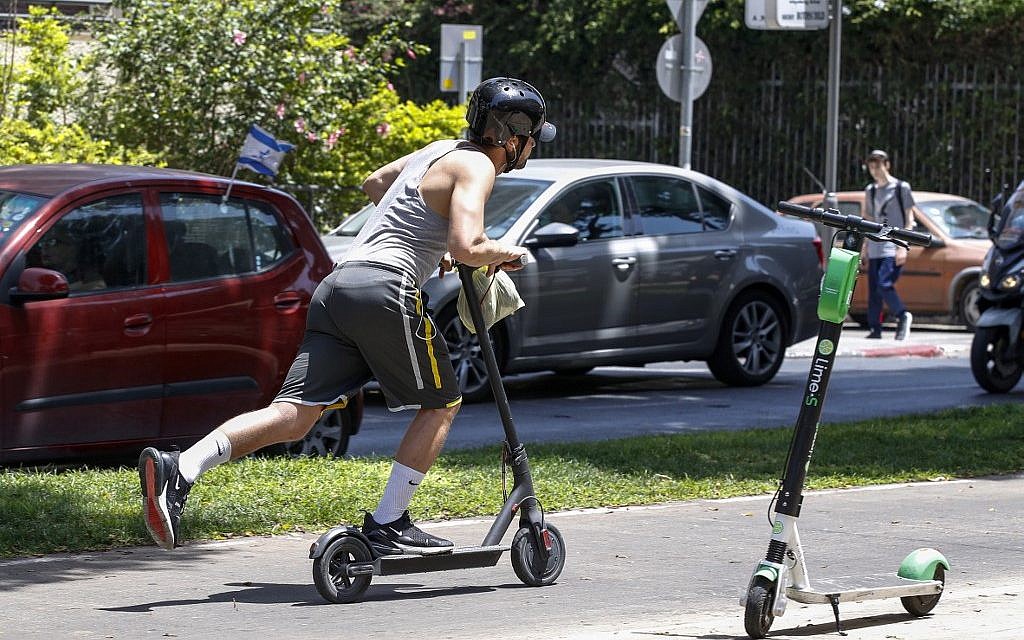
We do tend to say that the potential for Artificial Intelligence is limitless. So we are going to show some possible practical applications of AI in perhaps slightly more unusual instances. One great example of course is transportation – but we’ll be a little different and look at 3 ways in which AI can be applied to e-scooters. For part 1 we’ll look at how Artificial Intelligence can help reduce e-scooter accidents.
The numbers of e-Scooters in use in the UK has risen sharply over the last three years. This is in part due to them being readily affordable and, as far as some users believe, there is little legislation around them. No licence required (which is not true – you do need one) or a need to pay tax or insurance. Plus they are simple machines that take up little space, making them ideal for short hops in urban areas or to be rented out in hire schemes.
However, while you might well see plenty of these e-scooters around on the streets in places such as London, Bristol Norwich, they remain illegal to use anywhere except on private land. The exceptions are in towns that are designated to operate e-scooter trials, such as the three mentioned above.
So, e-scooters do seem to be popular. But with the rise in their use we have also seen an increase in accidents on our highways. Over a 12-month period ending June 2021 there were 882 incidents involving e-scooters. This resulted in 991 casualties, of which 732 were the scooter rider. Sadly, 3 of those riders died.
A telling statistics is how few accidents involved another vehicle. 36 cyclists were injured and 13 accidents were with a car. The majority of the accidents either did not involve another vehicle or were with pedestrians. This of course points to e-scooters being used on footpaths rather than on a road.
Is there a way we can try and reduce the accident rate involving e-scooters? Potentially yes, and it could be an excellent use of Artificial Intelligence.
The key here is to try and learn about these accidents from whatever data we can retrieve. As AI is able to understand patterns and identify future outcomes, a combination of data sources might be able to identify what circumstances can combine to increase the chances of an accident happening. The data can be quite disparate, but when brought together will help the AI engine to give accurate insight into the accident rate involving e-scooters.
Let’s look at this in a practical sense. A town is experiencing a sharp increase in the number of accidents involving e-scooters and pedestrians which, on first look, appears to be quite random. However, by using data recorded by the e-scooter along with other external sources the following information can be brought together:
- Date of the accident
- Time of accident
- Location of accident
- Direction of travel
- Speed of the e-scooter (both at the time of and leading up to the accident)
- The weather, again both at the time of the accident and leading up to it
- The temperature
Those quite basic data sources could reveal that the most accidents happened near two pedestrian crossings during rush hour with the sun in the rider’s eyes, obscuring their view. Furthermore, the AI platform could identify that rain anytime in the preceding 3 hours would increase the chances of an accident by 22%.
So far, so good. What makes this more useful is how the AI platform can also expand this ability across an area to give a detailed overview – and provide a forecast on the risk of accidents happening in the future.
From the information provided, different agencies can then step in to try and reduce the accident rate. A long-term solution could be for the local authority to put down new paving which forces an e-scooter rider to slow down, or re-surface the area to improve grip. But, the ability of an AI platform to identify a possible issue before it happens means it could direct resources to attend the pedestrian crossings and ensure any e-scooters were being ridden with care and consideration.
Next, we’ll take a look at how AI can be used to stop criminals using e-scooters.
